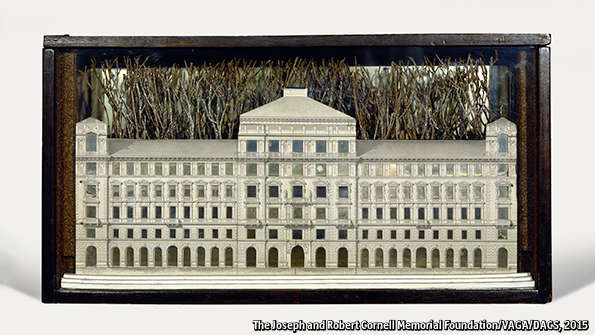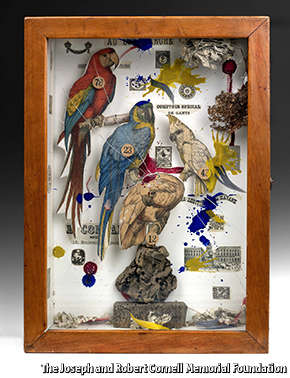School 1, 1977
152.5x213
In 1980 Mike Andrews was given a retrospective at the
Hayward Gallery. According to the catalogue entry for the work above, the
painter, then in his early fifties, had become interested in what people and
fish have in common or anyway what the behaviour of the later might tell him/us
about ourselves. It is a big, very attractive with wow power on a wall. But
decorative is what it is which is to say it is not a work of art. It delights
and disappears. Yet Andrews’ created some powerful, enduring works. And some of
them, at least, are part of the big show now getting rave reviews at Gagosian’s
Grosvenor Hill Gallery.
From schools of fish to the School of London, (Alas, I just can’t
avoid this one.) Fishes have nothing to say on the subject. As for the latter,
among artists, none agree to belong to it now or ever before. It stuck because
it was a useful for marketing to promote
a number of young to youngish figurative painters working in London in the
midtwentieth century. Figurative art was not what was happening then and from
Abstract Expressionism to Pop, London was not where art was happening; that
location was New York. But living
artists working in London at the time and Andrews was among them. His 1962
painting, “The Colony Room 1,” below, includes John Deakin and Bruce Bernard (now
famous photographers of that scene) as well as Francis Bacon and Lucian Freud.
Thee works have become ever more sought after by collectors and museums with price
tags that reflect it.

Following along behind are Frank Auerbach and LeonKossoff. But Andrews who was successful enough early on to be able to stop teaching, support his family and paint later drifted out of sight. Then around 2007 (it would be interesting to know why) his auction prices suddenly shot up. Now Gagosian (who is not the dealer representing his estate) is mounting “Earth Air Water,” this ambitious show (closing 25 March). All 62 paintings are loans—either from private collections or from institutions. Maybe a few lenders will part with their works for the right price, but overall this exhibition appears to be an image/reputation building event and-- who would object--if it is also a labour of love..

Following along behind are Frank Auerbach and LeonKossoff. But Andrews who was successful enough early on to be able to stop teaching, support his family and paint later drifted out of sight. Then around 2007 (it would be interesting to know why) his auction prices suddenly shot up. Now Gagosian (who is not the dealer representing his estate) is mounting “Earth Air Water,” this ambitious show (closing 25 March). All 62 paintings are loans—either from private collections or from institutions. Maybe a few lenders will part with their works for the right price, but overall this exhibition appears to be an image/reputation building event and-- who would object--if it is also a labour of love..
There are pictures to love but for me the show has one major drawback: It focuses an the
later works of Michael Andrews and it is the earlier ones that are
his best. Why? I could say because that is when he painted in oils and his subject was people. And it is a fact that later "ideas" and blown- on acrylic took dominate. And the earlier ones, as in the Colony Room, have a
warmer temperature. These paintings matter somehow while the later ones... Well clearly the selectors don’t agree.
One wall of the gallery is hung with photographs of Andrews, his sitters and friends. The rest of the vast, two storey space is hunt with
paintings in oil, acrylic and watercolour-- some of them big enough to fill the
wall of a generously proportioned house—but there is nothing homey about this
Mayfair space. It is sleek and warehouse huge with high ceilings and window-
walls of floor to ceiling glass. The finishes
are as luxurious as its scale. Chic and cool pretty much covers it. And so is too much of the work Andrews produced in the second half of his
career.
When I looked at his “Liner” of 1971-1972, a night view of a
cruise ship (alas not available for reproduction) my mind’s eye almost immediately replaced it with more poetic and powerful images of a liner
at night in Fellini’s “Amarcord” which opened about the same time this work was
painted. (An image from the film below.) I saw the movie years ago and yet it is Fellini’s
ship that remains vivid and strong while Andrews’ Liner which was hanging right in front of me
vanished as I stood there. And that I think is the heart of the matter.
The series of big bold red and orange Ayres Rock paintings are
striking alright. And his fishes are lovely. But blink and they have no more to say; to give; to inspire than a tourist board poster or high class restaurant mural. They are big, ambitious, attractive yet somehow slight.
The catalogue for this exhibition was written by Richard Calvocoressi,
who is Director and Senior Curator of Gagosian London. He knew Mike Andrews and
helped organize exhibitions of the artist’s work when he was alive. He talks
about Andrews interest in Zen Buddhism. The images of hot air balloons in
flight on view in this show are said to represent that efforts to transcend the
ego. There is more of these kind of "explaining." Maybe this helps viewers to see more in the pictures than they would have done otherwise. For me it is hot air not the ego inside those balloons.
I am sorry to say that once I’ve posted these words, many of these paintings now out of sight will also be out of mind. Sorry because I like the early pictures so much and because I am interested in many of the books that Andrews read and that influenced him. But I do not want to see the illustrations of the ideas he found so gripping if that is what most of these pictures are. Still "ideas" are all that most gallerists talk about when trying to sell works of contemporary art so it seems very likely that the later works of Mike Andrews will find a large, enthusiastic new audience..
I am sorry to say that once I’ve posted these words, many of these paintings now out of sight will also be out of mind. Sorry because I like the early pictures so much and because I am interested in many of the books that Andrews read and that influenced him. But I do not want to see the illustrations of the ideas he found so gripping if that is what most of these pictures are. Still "ideas" are all that most gallerists talk about when trying to sell works of contemporary art so it seems very likely that the later works of Mike Andrews will find a large, enthusiastic new audience..



